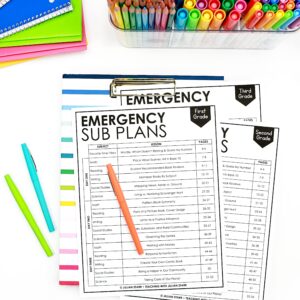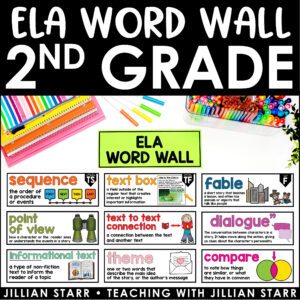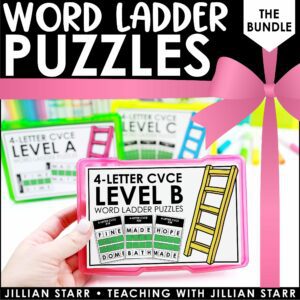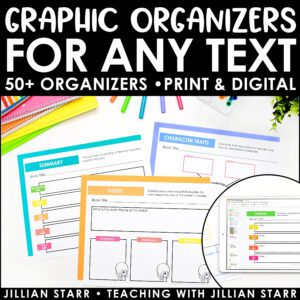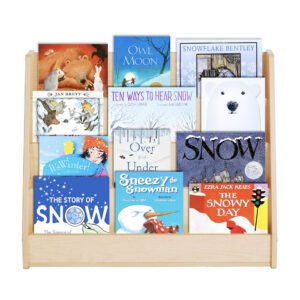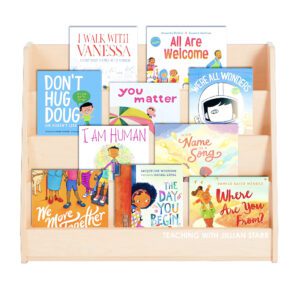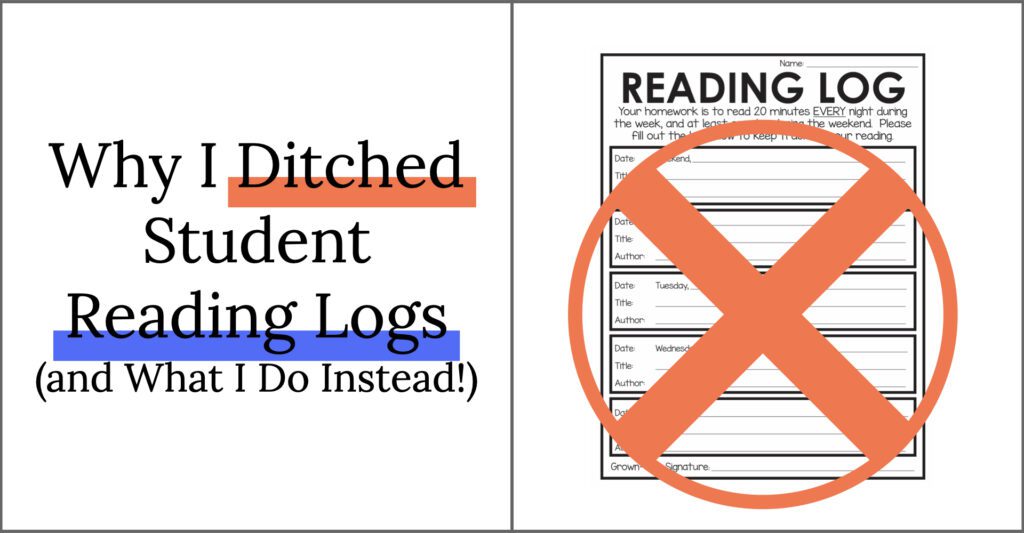
Let’s get right to the essential question: What is the purpose of a student reading log?
Weekly student reading logs are a common practice in our classrooms. And they have been for a loooong time.
I know because they were part of my own elementary school experience. Every week, I was expected to fill out a reading log. I was required to read independently every night at home. Then, I was expected to track my nightly reading, write it down, and turn it in to my teacher the following week. Sound familiar?
My Big ‘Why’
I really wanted to do well in school and I really wanted to please my teachers. But, I didn’t know how to read. So instead, I learned to lie. Instead of turning in reading logs that reflected my actual independent reading practices, I made them up. I started writing down books and page numbers that I thought would make my teacher proud of me.
Fast forward to today: Reading logs are still a common practice in classrooms across the country. Thankfully, routines and expectations around student reading logs have shifted. Many teachers and districts allow audiobooks and read alouds with parents to count as nightly reading. The expectation that all students just read by themselves is no longer part of the equation. Yay! But the battle of reading at home and logging pages remains the same.
We want students to spend time with books. We want to emphasize and support reading at home. Additionally, we want students to build a healthy book-centered routine outside of school. (Lying isn’t a great place to start.)
The joy of reading doesn’t start with a reading log. Instead, student reading logs micromanage home reading routines. Rather than diving into a good book with joy, reading becomes a “must do.”
The good news? You don’t need a student reading log to spark joy around reading.
In this post, I’ve outlined some of the practices I’ve implemented to replace student reading logs. You’ll find new ways to motivate students to read and more productive ways to track and process their reading (And: If you’re one of the many required to send home a reading log, don’t fret! I’ve got some ideas for you as well!).
Get Kids Motivated
The best way to get kids reading: Get them motivated to read! If a person wants to read, they won’t need a student reading log to ensure they are doing it. But, how do you get kids motivated in and out of school?
Every student is different. That means you’ll need to have a few approaches.
Some students love personal data. They are excited to keep track of their reading time and, subsequently, challenge themselves to read more (think: people motivated to move by wearing an AppleWatch).
Other students learn to love reading by finally finding books that inspire them, perhaps with stories that connect to their own or highlight influential people in the world (think: people who are motivated to move because of an inspiring coach or mantra).
Other students get excited to read because other people are excited (think: people motivated to move socially).
Motivation for Data Lovers
For those who love reading logs: keep them. While I firmly believe they shouldn’t be a requirement for all, a sense of challenge or a concrete way of seeing growth is important to some students. They might love student reading logs that keep track of their time. These students often find completing a challenge or filling in a certain number of minutes rewarding.
For those students, I create time trackers. They aren’t a requirement, but they encourage students to track all kinds of reading (reading to yourself, having someone read to you, listening to a book, track in 20 min intervals, track up to 24 hours). You can a great version of this from my librarian friend, The Book Wrangler (I’ll share more of his content below).
Motivation for Community-Oriented Challengers
Student reading logs have always been a private, independent way to track personal progress. For some kids, the social connection to books means everything. Whole class book tracking has become one of my favorite ways to excite the whole group about reading.
Try creating a whole class book meter. See how many books you can consume each term. Instead of showing individual reading (which can be heartbreaking for those who need support with reading), this is a way for the whole class to come together and encourage each other to read more and more.
Motivation for Readers of Recommendations
Some kids get excited to read books that others have enjoyed. Perhaps they like the idea of sharing that experience with other kids. Or, perhaps they just need those strong recommendations to get going. Even if time is limited, there are many ways to advertise beloved books.
- Have students write their current or favorite book on a post-it note. Place the post-it on a “what we are reading” or “what we love reading” board.
- When a student finishes a book, you could print a miniature version of the book cover and place it somewhere in your book area.
- You could have kids write book recommendations that slide into a book pocket for slightly older grade levels (3rd and up).
Make sure that you engage readers from many different angles. And, when in doubt, I look to The Book Wrangler. The Book Wrangler is a librarian who has developed endless ways to engage students in great books. Some resources from The Book Wrangler include:
- National Holiday Book Lists
- Ways to spice up your library to intrigue students to find specific books
- “If you loved this book, you also enjoy…” lists
His resources help highlight the joy of reading. And, his activities around books are simply fun!
Focus on Reading Responses
One big pitfall of student reading logs: they don’t encourage students to think about what they are reading. When I ditched student reading logs, I wanted to find a way to hold students accountable for reading substantively. Reading responses became the golden ticket.
I decided to create a reading response journal. It would be a place for students to share their books and practice writing about their reading.
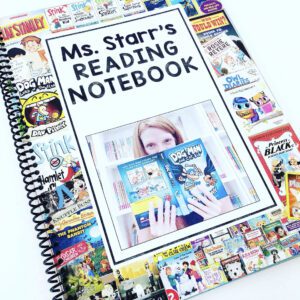
Free Reading Response Journal
Looking for a way to engage your students in writing about reading? These templates can be printed as single responses, or bound together to create student journals. Best part? They’re FREE!
The result: reading responses became a way to reframe book tracking and provided numerous ways for kids to interact with books (and me!):
- Reading response journals create space to share what a student has been reading.
- They act as a place for students to build + share a catalog of reading preferences.
- They are an outlet for writing book recommendations to friends.
- And, if you have the funding, a way to turn recommendations into ACTUAL BOOKS that appear in your permanent class library.
Note: I use these reading responses in class. I can give instant (or quick) feedback. Students can share their ideas with others (yay for generating excitement). And I can support students directly when they need it.
Create A School to Home Culture of Reading
One of the most significant barriers to building a home reading life is a disconnect between school and home norms. One of the most effective ways I’ve helped families support reading at home is through conversation.
Conversation Starters
Getting families talking about books is a simple and easy way to make a massive impact at home. Within my newsletter, I send out lists of questions to get families and kids talking about in-class learning and books every week. For example:
- What was your favorite read-aloud this week?
- What was today’s geography question?
These conversation starters have become especially important during COVID. There is less face-to-face contact with families. Parents are not able to enter classrooms and see what is on the walls.
So, instead, these questions open up conversations at home about reading. Parents learn how to ask their children about the books they are reading in supportive and encouraging ways.
Check-ins with Families at Pick Up and Drop Off
Here’s another way to open up conversations about reading. I often focus these quick 2-minute conversations on– yes, you guessed it– books. I try to ask as many questions as possible to understand what and how much students are reading at home. What books are HOT at home this week? What books are you reading together? Are you noticing a lot of morning reading or before bed reading?
These conversations give me two essential types of information:
- Topics and types of books that excite kids the most.
- Routines around reading that are motivating and sticking with kids.
- The level of book access a student has at home.
Access to Books
This is another significant barrier to building a home reading life. Quick conversations with families — not student reading logs — help me understand the number of books at home, what kinds of books are at home, and book deficits. It also gives me a discrete opportunity to give books to those who need them. I can quickly hand over books that match student interests and the routines of that student’s household.
What to do if you’re required to assign a reading log?
I recognize that ditching student reading logs is a privilege. Some teachers don’t have a choice. For those of you who fall into this category, I’ve got a few suggestions.
Make Your Reading Log as Inclusive as Possible
- Allow a variety of book/reading options (such as audiobooks, reading with a caregiver, etc.)
- Create a straightforward reading log that is accessible to students struggling with executive functioning.
- Provide opportunities to support students with their home reading, such as an after-school reading club.
- Send home books that fit students’ “Just Right” reading level and match their interests.
Start a Conversation with Your Administration to Rethink the Practice
Policy change can start with you! While you continue to make your student reading log as inclusive as possible, you can also start to talk with your administration about why reading logs aren’t serving your students. Some talking points could include:
- Student reading logs do not equal accountability with home reading.
- Reading logs do not support an equitable reading community.
- There is a range of other ways to support home reading that also develops closer relationships with students and families.
I am forever exploring new ways to get kids excited about books. Hopefully, these ideas have inspired you to break away from student reading logs and explore the endless– more meaningful– opportunities to engage students with books. As always, I love hearing your feedback and learning from YOU.



